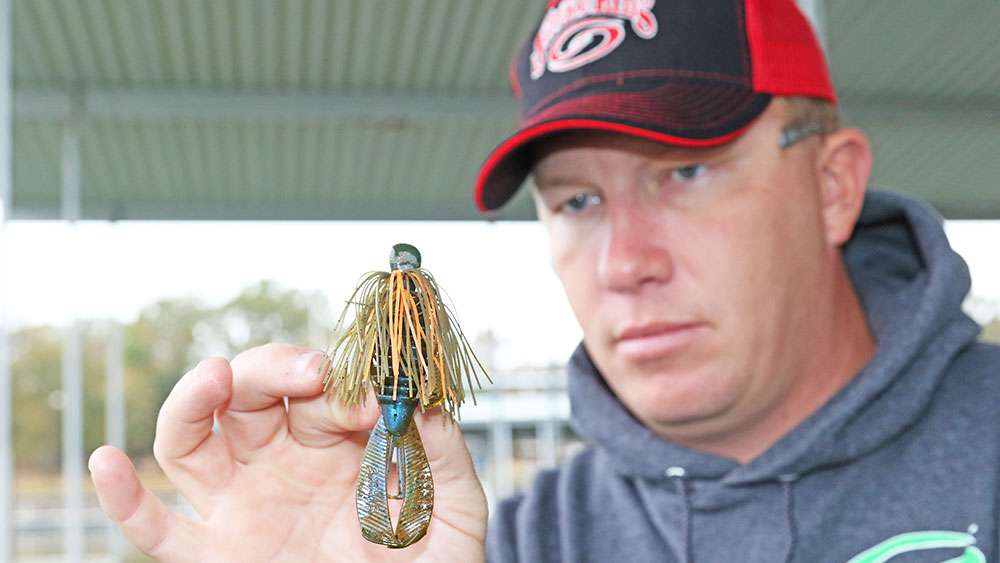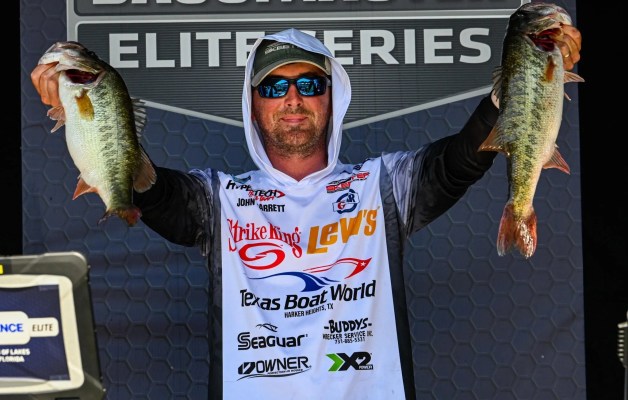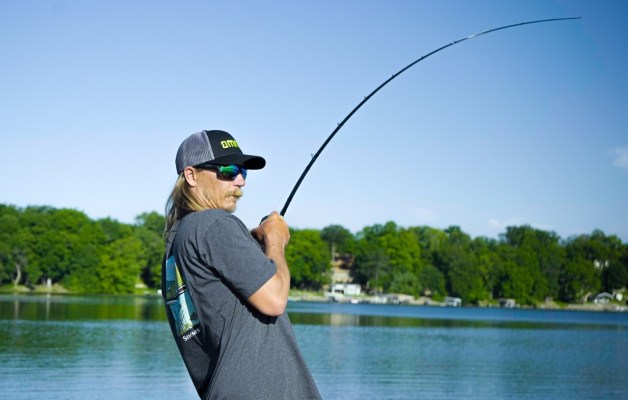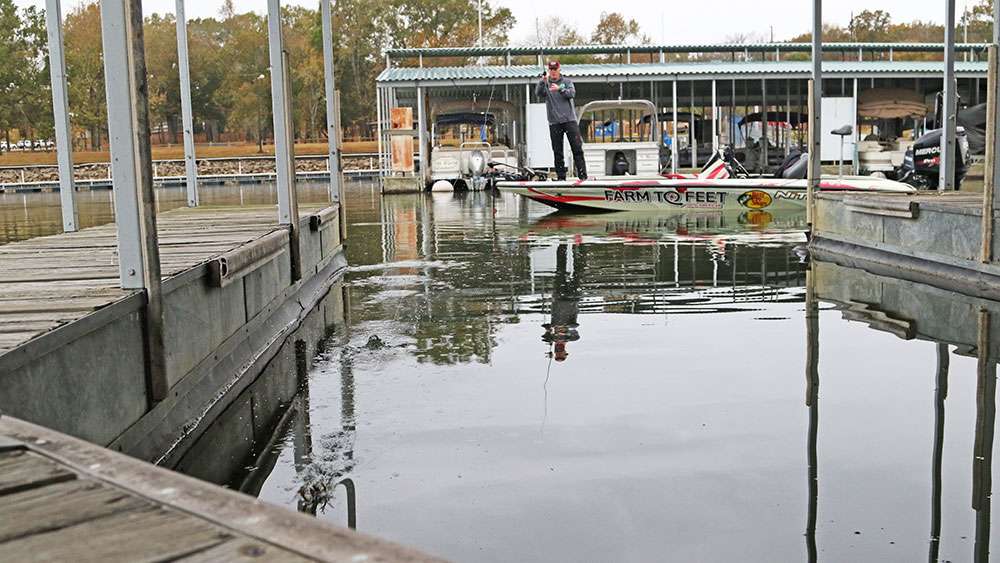
Where some see frames of metal and wood, spider web-strewn and draped with ropes, Andy Montgomery sees opportunity too enticing to ignore. When some grimace at the risk of snags, backlashes and fish-spooking bumps, he grins with confident expectation.
The difference? Montgomery’s one of the smoothest dock skippers you’ll ever meet.
I recently watched the Elite pro from Blacksburg, S.C., send a jig ticking across the water with the same smooth consistency with which a friend’s child sent his toy cars zipping across that track he got for Christmas.
Convinced of the dock game’s potential, he’s dialed in a system of surgical accuracy that enables him to maximize his time with rapid successions of precise presentations.
Yeah, he has a firm grasp of the tackle and technique elements, but it all starts with the package.
Skirting the issue
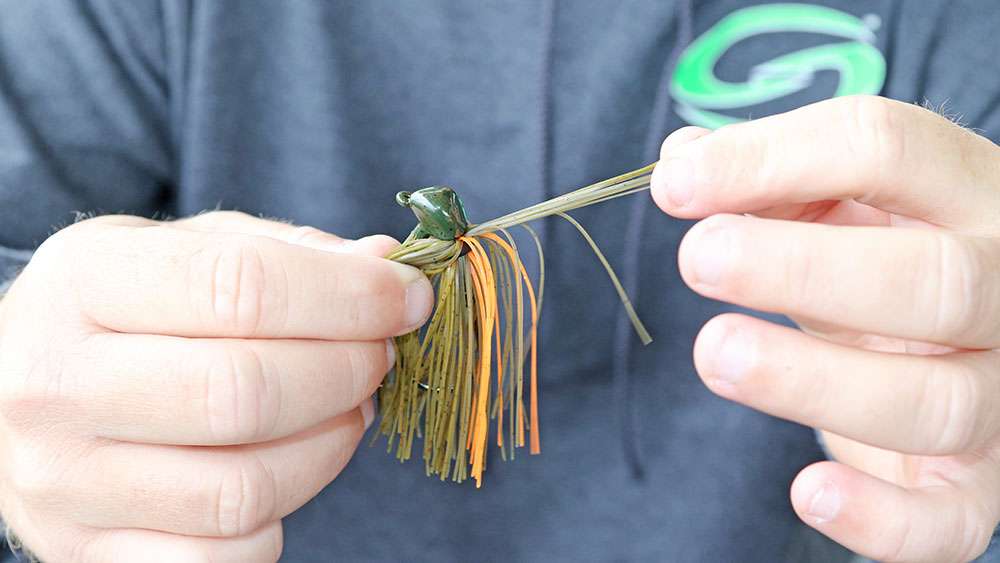
Montgomery favors a Strike King Tour Grade Skipping Jig, which features a 60-count silicone skirt and flat-sided head for optimal water interaction — kind of like those flat rocks we look for when skipping across the pond.
Admittedly, he’s a stickler for perfection, so right out of the package, he’ll give his instrument of intrusion a thorough inspection. Strike King makes a solid product, but if something can move, it usually does.
“Sometimes in the package, the skirt will get uneven,” he notes. “So I’ll slide it around to get it nice and even — pretty.”
Next comes the jig skirt therapy. Massaging the fibers with gentle downward strokes separates the clumping and sticking that can occur in the packaging.
“Basically, I want the skirt even (in alignment and separation) because I don’t want it to fall to one side or the other.”
A little off the bottom
With his skirt properly situated, Montgomery next addresses the length. Full skirts have their purposes, but his skipping program addresses every element of form and function.
Gathering the fibers into a tight bunch, Montgomery will pinch the skirt between his fingers and trim about 1/8 inch. A smooth, measured cut made in three to four increments ensures an even edge and the compact package Montgomery needs for silky smooth skips.
“I trim the skirt so my Rage Bug has plenty of room for that action it was made for,” Montgomery said.
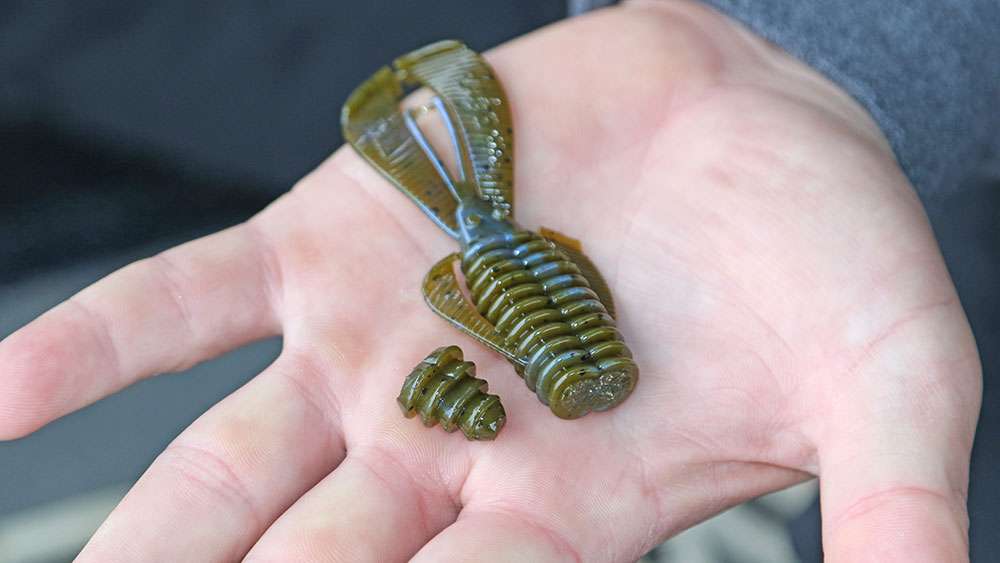
On the back end
A skipping jig trailer has a job to do, but it’s more about creating the right balance of profile and aqua dynamics than enticing fish with lots of active appendages. For this task, Montgomery goes with the Strike King Rage Bug, a streamlined bait with a ribbed body and coffee scent.
Montgomery says he uses this 4-inch bait about 90 percent of the time, but he’ll alter the length 100 percent of the time.
“I’ll bite off four of those rings,” Montgomery said. “When I thread it one the hook, I like to come out between the last two rings.”
The benefit here, he said, is twofold: First, shortening the trailer creates a more compact bait profile and a shorter trailer means less water drag.
From an efficiency standpoint, positioning his hook right above the Rage Bug’s eyes brings the business end closer to the point of attack and increases his hook-up percentage.
Now, one of the common issues with the impact-heavy skipping routine is trailer slippage. (Ever had your swimming suit yanked off your backside while tubing? Same deal.)
Gluing trailers to jigheads alleviates the problem, but that’s time consuming and potentially messy business. Montgomery’s found the Tour Grade Skipping Jig alleviates all that hassle with a screw-lock trailer keeper system, which holds his plastic in place no matter how hard it hits the water.
“All I do is push it up on there, twist it about four or five times and Bam — ready to go fishing,” he said. “When I bite it down, the trailer’s not too bulky; it’s just a nice compact jig that’s going to get you a lot of bites.”
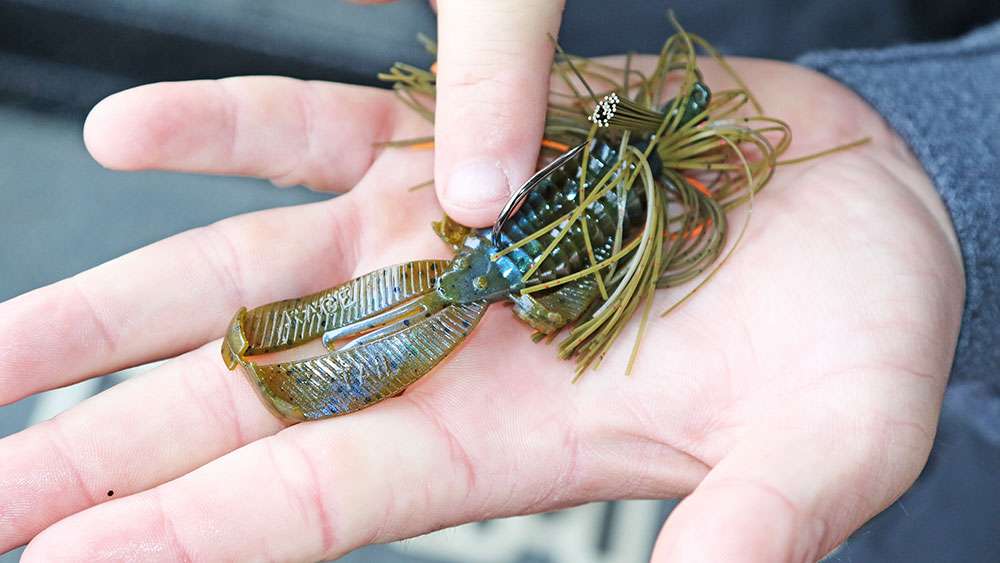
Tackle and tips
With his well-tuned skipping package properly nipped and tucked, Montgomery arms himself with the tackle capable of efficient delivery and fish extraction.
Rod: Preferring a 7-foot, 1-inch heavy-action Daiwa Tatula, he suggests this length for taller folks, but points to a 6-foot, 9-inch version for those of lesser height.
“The good skipping motion is not a sidearm cast, it’s almost an underhanded roll cast,” Montgomery said. “If you use too long of a rod, you’ll hit the water and that longer rod will force you to use a sidearm motion.
“If you fit the rod length to your height, it will prevent you from hitting the water. You can skip with a sidearm motion, but you’re way more accurate with an underhand cast.”
Reel: His Daiwa Tatula CT 8:1 offers a couple of particularly important features. First, the T-Wing System reduces the cast slowing friction common to the narrow line guide of most level wind reels by allowing line to exit less encumbered through the wider top section. On the retrieve, line funnels into the T-Wing’s narrow lower channel for better control and even spool distribution.
As for reel speed, Montgomery offers this: “When you skip, you create a lot of slack in your line and having a high-speed reel lets you get that slack out of your line.”
Line: Montgomery spools his reel with 25-pound fluorocarbon, a good choice for sinking the bait quickly upon arrival. Beginners, he said, might do better with a super limp monofilament until they master the delivery.
